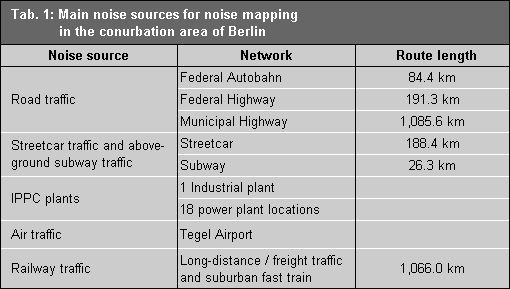Legal Provisions and Competent Authorities
The “Directive of the European Parliament and of the Council relating to the assessment and management of environmental noise” came into force on 18th February 2002, when it was published in the Official Journal of the European Community. This opened for the European Community the path towards legal provisions which were also to apply to noise immission in the environment.
The German Federal Environmental Office describes the objectives of the Directive as follows:
“Ensuring a high degree of health and environmental protection is part of the Community policies, one of the objectives being noise protection.” To achieve this, “adverse effects of and annoyance caused by environmental noise must be prevented, avoided and reduced.” This requires the following action:
- determining the load caused by environmental noise by means of noise maps and according to assessment methods to be used by all of the Member States;
- ensuring that the public is informed about environmental noise and its effects;
- adoption of action plans through the Member States based on the results of noise maps and aiming at preventing and reducing environmental noise where necessary and particularly in cases where exposure levels might have effects that are detrimental to health and further aiming at maintaining environmental noise quality where it is good.
Furthermore, the Directive should form the basis for further development and enhancement of measures to reduce the noise emission of the most relevant noise sources and it should also inform the European Commission about the exposure caused by environmental noise in the Member States.
The “Senatsverwaltung für Gesundheit, Umwelt und Verbraucherschutz“ (Senate Administration for Public Health, Social Services and Consumer Protection) ordered and implemented the noise mapping project for the Land of Berlin as provided in the requirements of the Noise Mapping Decree (34th BImSchV = Bundes-Immissionschutzverordnung or Federal Immission Protection Decree) in connection with Paras. 47 a–f of BImSchG (Bundes-Immissionschutzgesetz or Federal Immission Control Act) and Directive 2002/49/EC (Environmental Noise Directive), with the current LAI instructions on noise mapping taken into consideration.
The plan aimed at creating strategic noise maps and the related statistical evaluations (exposure for humans, dwellings, schools and hospitals in specific immission level classes). Results were prepared with regard to the following items for further utilization through the customer:
- basis for reporting to the EU and for informing the public;
- basis for drawing up action plans for noise reduction measures (noise reduction plans for Berlin);
- basis for managing the output data (data model care);
- basis for re-calculation and evaluation of spatially defined areas.
Paras. 47 a–f of the Federal Immission Control Act (BImSchG) lay down the rules for implementing the EU Environmental Noise Directive according to German law. The Noise Mapping Decree (34th BImSchV) defines the requirements for noise maps according to Para. 47 c of BImSchG.
Noise maps must always be calculated. Calculations must comply with the preliminary EU-conforming calculation rules, which deviate from the Technical Codes that are binding according to national law in some aspects (see below, “Calculation Methods”).
Noise maps are to be reviewed and, if necessary, revised every five years after they have been drawn up.
The maps 07.05.12 – 07.05.15 (total noise of all traffic sources) are not a component of the “Directive of the European Parliament and of the Council relating to the assessment and management of environmental noise”. These maps represent the attempt, to present a summing up contemplation of the single traffic noise-sources. Due to lacking knowledge about the dose-effect relationships, only an energy summation was proceeded. Therefore the contemplation of the total noise cannot meet the requirements to respect the burden-effects of the individual noise sources (cf. cumulative values of the noise exposure).
General description of main noise sources, based on their position, size and road traffic / mapping scope
The borders of the area under examination are the borders of the Land of Berlin. The following noise sources were examined:
- Road traffic (motor vehicles including busses)
- Streetcar traffic and above-ground subway traffic
- Industrial and commercial areas with plants complying with Annex I of Directive 96/61/EC of the Council of 24th September 1996 concerning integrated pollution prevention and control (IPPC plants including power plant locations and Westhafen)
- Air traffic (Tegel Airport)
- Railway traffic according to the Allgemeines Eisenbahngesetz (AEG, General Railroad Law).
Included in the examination were further relevant main noise sources in the Brandenburg area adjoining the borders, which exceed the specified immission levels (excluding Schönefeld Airport).
Table 1 gives an overview of the noise sources included in the examination:

